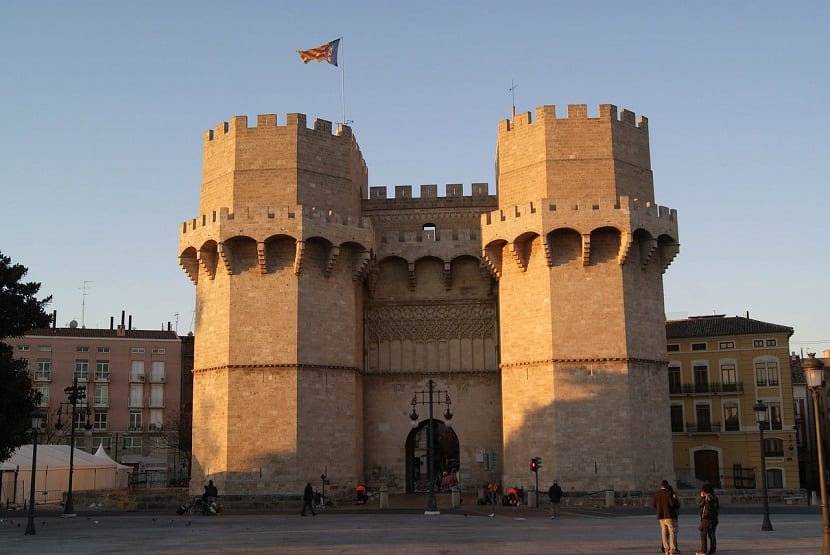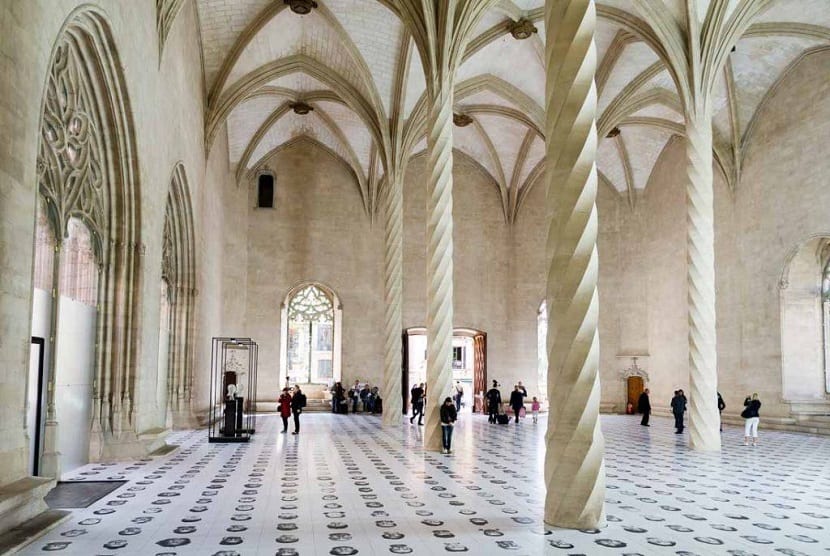
Archdiocese of Valencia
Valencia is the third largest city in Spain and one of the main tourist destinations in the country, not only from a cultural and gastronomic point of view but also ecotourism. Its beaches are highly appreciated by lovers of the sea and thanks to its mild climate, Valencia is a good destination to visit at any time of the year.
If you want to enjoy the city of Túria like another Valencian, you cannot miss the following post where we discover the best places to see in Valencia.
El Carmen neighborhood
Located in the historic center of Valencia, the Carmen neighborhood is a place to wander and get lost. One of the most charming neighborhoods in the city that grew up between the Christian and Muslim walls that has become a leisure and culture center in Valencia full of places with a youthful atmosphere perfect to taste the best local and international cuisine and to go out partying.
In addition, in the emblematic Carmen neighborhood of Valencia are some of the most outstanding monuments of the city:

Image | Pixabay
Quart Towers
They were part of the old medieval wall and had a defensive function. They are the only gates in Valencia along with the Torres de Serrano that are preserved as monuments in Valencia.
Serrano Towers
They are another of the emblems of Valencia together with the Torres de Quart. They are located next to the old Turia riverbed and can be accessed to contemplate the city from the top of the towers.
Cathedral of Valencia
Did you know that the Holy Chalice is in the Cathedral of Valencia? Located in the Plaza de la Virgen, next to the Basilica of the Virgen de los Desamparados, the temple was erected on the land that once occupied a Roman temple and a mosque. Consecrated in 1238, it is dedicated to Jaume I the Conqueror and its dominant style is Gothic, although elements of the Renaissance, Baroque and even Neoclassicism can also be found, since its construction lasted several centuries.
Inside the Cathedral is located the Cathedral Museum, which exhibits up to 90 works of different artistic styles, highlighting among them the canvases of Maella and Goya or the panel paintings of Juan de Juanes as well as the Virgen de los Desamparados de Valencia and other Christian relics. . Outside, the temple is made up of the Puerta de l'Almoina, the Chapel of Sant Jordi, the Miguelete tower in the Valencian Gothic style, the Puerta de los Apóstoles and the Puerta de los Hierros.

Image | Tripkay
The fish market of Valencia
It is one of the characteristic buildings of Valencia and one of the best examples of European civil Gothic with a commercial and commercial function. It was declared a World Heritage Site by UNESCO in 1996 and has been distinguished as a Historic-Artistic Monument since 1931. The Valencia fish market was built during the XNUMXth century known as the Valencian Golden Age in full economic growth of the Crown of Aragon.
The Central Market
Since the Middle Ages, the Central Market of Valencia has always had a commercial vocation. Formerly this activity was carried out with outdoor stalls and at the end of the XNUMXth century it was decided to build a building that would accommodate the market. With the turn of the century, its capacity had to be expanded and for this he endowed it with a modernist aesthetic that was very popular at the time, based on materials such as ceramics, iron or glass, achieving shapes with a great optical and plastic effect.

The Oceanographic
Since it opened its doors in 2003, the Oceanogràfic of the City of Arts and Sciences in Valencia has become the largest aquarium in Europe. POwing to its dimensions and design, as well as its important biological collection, we are faced with a unique aquarium in the world in which the main marine ecosystems of the planet are represented. and where, among other animals, dolphins, sharks, seals, sea lions or species as curious as belugas and walruses coexist, the only specimens that can be seen in a Spanish aquarium.
One of the most important works of the Oceanogràfic de Valencia is its commitment to nature and its ability to raise awareness of the importance of its care. The idea behind this unique space is for visitors to the Oceanográfic to learn the main characteristics of marine flora and fauna from a message of respect for environmental conservation.
Turia River Gardens
This 110-hectare urban park is one of the most visited parks in Spain. It has its origin in 1986, when a flood gave rise to an empty lot that was used for the leisure of Valencians. The Turia Garden is also limited by Bioparc, the avant-garde City of Arts and Sciences, Gulliver Park, Palau de la Música and Cabecera Park.
Thousands of people visit it every year and many Valencians tend to have picnics and spend the day on weekends.

Image | Pixabay
Bioparc
Bioparc is a zoo located at the west end of the Turia Garden that was inaugurated in 2008 to replace the old Valencia Nursery Zoo. The park is divided into four biomes: humid savanna, dry savanna, forests of Equatorial Africa and Madagascar. All of them house up to 4000 animals of hundreds of different species.
This natural space perfect to visit with the family. Bioparc is an original and magical environment with a program of free leisure activities with recreational-educational content that show visitors the importance of preserving the planet.
To the delicious horchata!
A visit to a tourist always makes you thirsty, so there is nothing better to recharge your batteries than having an authentic Valencian horchata. This delicious drink so popular in Spain is perfect to beat the heat and discover the flavor of Valencia. There are many quality sites scattered around the city. A tip: accompany your horchata with some fartons, a typical sweet that is always accompanied by horchata. Delicious!